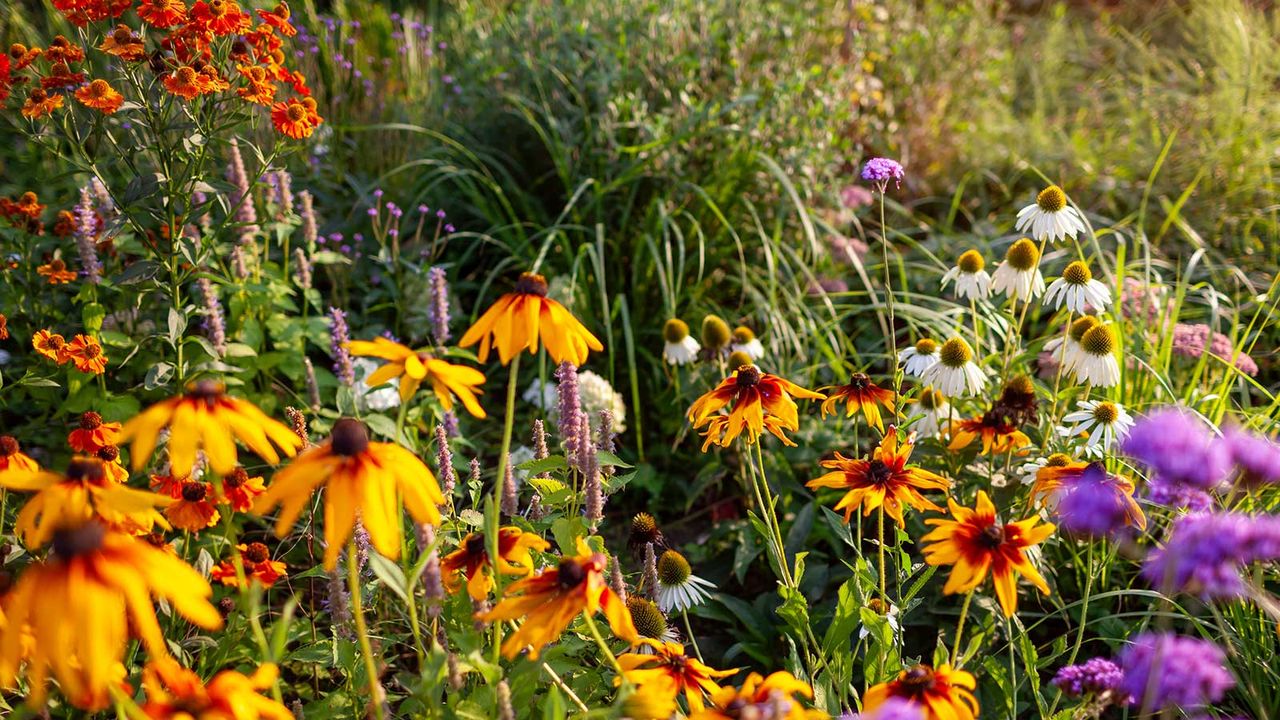Lifestyle
Landscape Experts Share Essential October Gardening Tasks

As the fall season progresses, landscape designers are emphasizing the need for essential gardening tasks to prepare for the winter months. October presents a crucial time for gardeners to focus on specific activities that enhance soil health, ensure plant vitality, and promote a thriving garden in the upcoming spring. According to experts like Laura Janney, CEO of The Inspired Garden Masterclass, and Mintee Kalra, founder of Peruse, taking action now can have lasting benefits.
Key October Gardening Tasks
To assist gardeners in maximizing their outdoor spaces, Janney and Kalra highlight four vital tasks that should be on everyone’s October gardening checklist. These activities not only protect existing plants but also lay the groundwork for a vibrant spring.
1. Preparing Soil with Mulching
Mulching is a practice that should not be overlooked, according to Janney. She explains that organic mulch serves two primary purposes: it protects the roots of perennials and shrubs during winter and suppresses weed growth. Janney advises using a natural mulch that is free from dyes and chemicals, stating, “It is more expensive but worth the investment. It doesn’t break down as easily.” A depth of two to four inches is recommended for optimal protection.
Kalra adds to this by emphasizing the importance of nourishing the soil. “Even in a naturalistic garden, soil is the quiet engine of health,” she points out. She layers compost or aged leaf mold, providing essential nutrients without disturbing root systems. This slow-release approach is crucial for ensuring robust blooms in the next growing season.
2. Dividing Overgrown Perennials
October is an optimal time to divide perennials that have outgrown their space. Janney suggests that this practice not only keeps plants healthy but also results in additional plants. For effective division, she recommends fully digging up the plants, removing excess soil, and cutting larger specimens in half with a sharp spade. Smaller plants can be divided using a hori hori knife. After trimming any long roots, it is important to replant and water the perennials immediately.
3. Cutting Back Certain Plants
As the air begins to cool, Kalra advises gardeners to edit and refresh their plantings. In regions like Los Angeles, where the soil retains warmth, this is an ideal time to thin out summer growth. “I cut back tired salvias and gaura, leaving the seed heads where they’ll self-sow or feed birds,” she explains. This selective pruning not only preserves the architectural beauty of the plants but also promotes air circulation, which is beneficial for root strength during winter.
Janney echoes this sentiment, noting that pruning can prevent diseases and maintain a tidy garden. She recommends using sharp, clean pruners to ensure that plants remain healthy throughout the changing seasons.
4. Tending to Trees
After the stress of summer, trees require careful attention. Kalra suggests conducting a post-heat assessment to identify any signs of damage, such as sunscald or cracked bark. Early fall pruning is advisable, focusing on removing deadwood and balancing the weight of branches to prepare for winter rains. “The goal isn’t aesthetic perfection but long-term vitality,” she asserts.
For those uncertain about tree care, hiring a trained arborist can ensure safety for both the gardener and the trees.
Tasks to Avoid This Season
While there are crucial tasks to undertake, there are also activities that should be avoided during this time. Janney warns against pruning shrubs, which can stress plants as they enter dormancy and increase the risk of disease. She suggests postponing this task until late winter or early spring.
Additionally, caution should be exercised with certain types of hydrangeas. Pruning ‘old wood’ varieties now could result in a lack of blooms in the following spring, while ‘new wood’ hydrangeas are often pruned later in the season to minimize stress.
Another common mistake is planting too close to the end of the season. Janney recommends not planting past mid-October to allow enough time for roots to establish before winter conditions set in.
Weeds continue to thrive in fall, competing with perennials for vital resources. Janney emphasizes the importance of weeding to support plant health. Additionally, maintaining proper watering is crucial, as it helps protect plants from frost stress and ensures well-established roots for the winter.
For gardeners looking to make the most of October, this is also an excellent time to plant spring bulbs and an array of flowers for vibrant displays next year, along with some vegetables if desired.
By following these expert recommendations, gardeners can ensure their outdoor spaces remain healthy and beautiful as they transition into winter, setting the stage for a flourishing spring.
-

 Science1 week ago
Science1 week agoResearchers Challenge 200-Year-Old Physics Principle with Atomic Engines
-

 Politics1 week ago
Politics1 week agoNHP Foundation Secures Land for 158 Affordable Apartments in Denver
-

 Health1 week ago
Health1 week agoNeuroscientist Advocates for Flag Football Until Age 14
-

 Health1 week ago
Health1 week agoFDA Launches Fast-Track Review for Nine Innovative Therapies
-

 Lifestyle1 week ago
Lifestyle1 week agoLongtime Friends Face Heartbreak After Loss and Isolation
-

 World1 week ago
World1 week agoGlobal Military Spending: Air Forces Ranked by Budget and Capability
-

 Politics1 week ago
Politics1 week agoIsraeli Air Strikes in Lebanon Kill One, Wound Seven Amid Tensions
-

 World1 week ago
World1 week agoTroops to Enjoy Buffalo Chicken, Thai Curry in 2026 MREs
-

 Business1 week ago
Business1 week agoMaine Housing Inventory Surges to Post-Pandemic High
-

 Top Stories1 week ago
Top Stories1 week agoUnforgettable Moments: The Best Victoria’s Secret Performances
-

 Business1 week ago
Business1 week agoSpirit Airlines Cuts Workforce with Furloughs for 365 Pilots
-

 Politics1 week ago
Politics1 week agoMassachusetts Lawmakers Resist Audit After Voter Mandate









